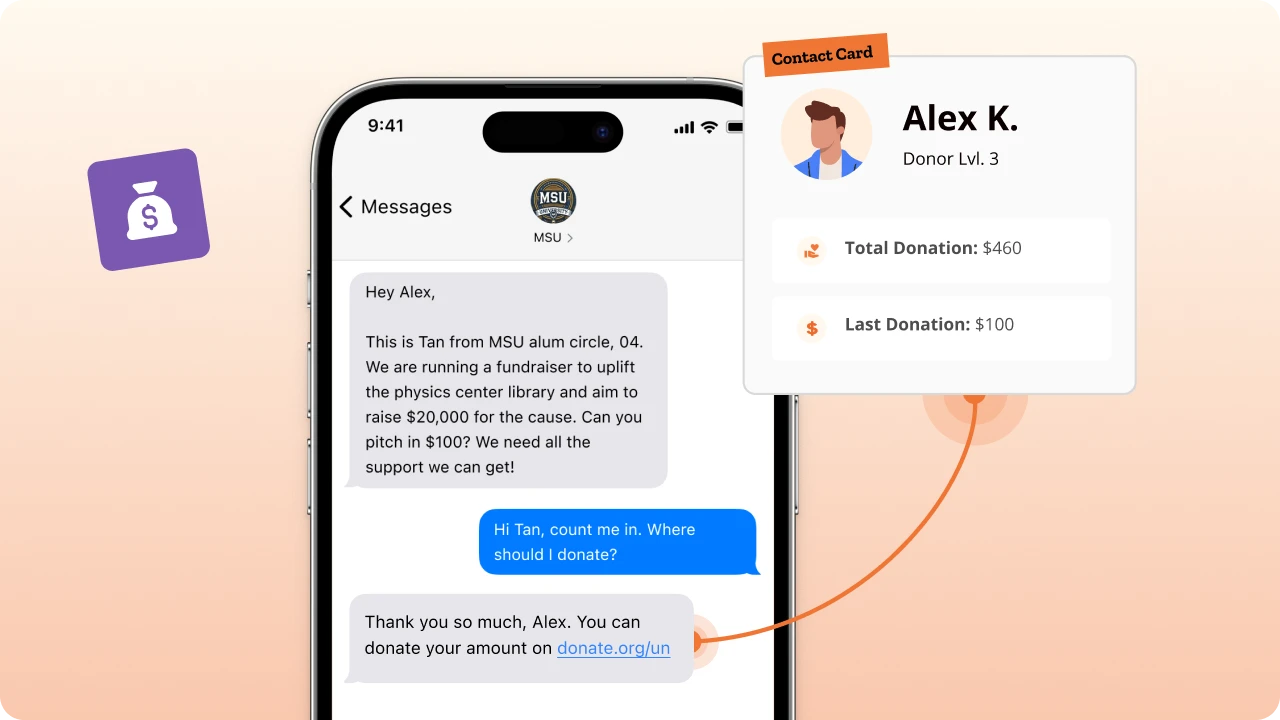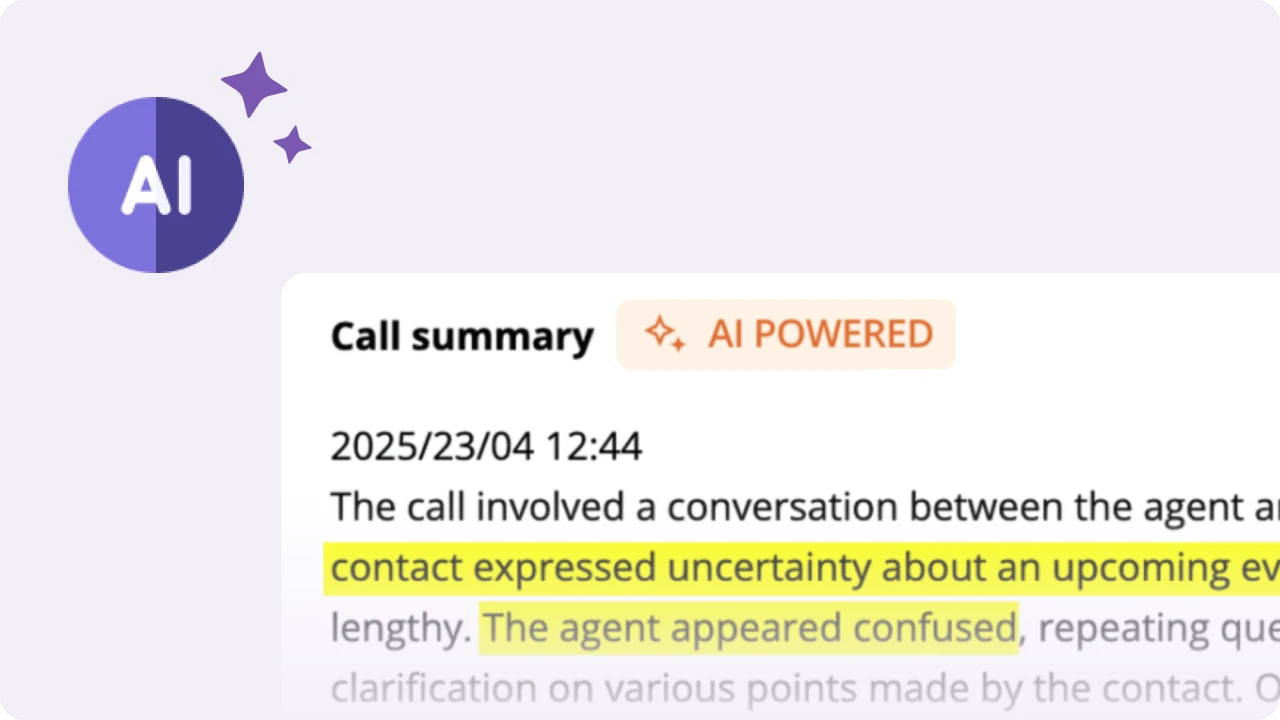Table of Contents
“Do I need a multi-channel advocacy campaign? My team can write a killer email, and I have 1 million followers on Instagram…” You may feel confident because you have one or two powerful outreach avenues. But even as early as 2015, Microsoft uncovered that the average human attention span has dropped to just 8 seconds, down from 12 seconds in 2000.
Now that your target audience’s ability to pay attention is lower than that of a goldfish, believing that a single email, social media post, call, or message can advance your cause is misguided.
Moreover, putting your entire advocacy outreach efforts into the hands of an uncaring engineered ‘algorithm’ that can change anytime, just because the majority shareholder woke up on the wrong side of their bed, is what?.
If your emails go to spam or your social posts are buried by an algorithm update, all your advocacy campaigns can stall.

Only a multi-channel advocacy campaign can rescue your outreach efforts in 2025.
Success now depends on delivering concise, compelling messages across multiple channels, ensuring your advocacy efforts are seen, heard, and remembered.
Indeed, 71% of consumers expect brands and organizations to interact with them across their preferred channels.
| At a glance: Single-channel vs multi-channel outreach | ||
| Aspect | Single-Channel | Multi-Channel |
| Outreach experience | Inconsistent/minimal calls for their attention on a single platform. | A continuous ‘journey’ of communication across multiple platforms and methods. |
| Campaign ROI | Lower engagement due to low visibility and reach, reducing ROI. | Improved personalization across platforms leads to higher engagement and ROI. |
| Campaign impact | Vulnerable to channel disruption or algorithm changes. | Resilient due to multiple options. Able to pivot quickly as trends/platforms change. |
In this article, we shall deep dive into:
- How you can orchestrate a multi-channel advocacy campaign with CallHub,
- Getting into all the details you need to consider before you launch one, and
- How to track your advocacy campaign’s success once you do.
How to run a multichannel advocacy campaign: Map channels to moments
CallHub lets you make calls, send pre-recorded voice broadcasts, blast out updates as text broadcasts, sign up people using text to join, and have one-on-one conversations using P2P.
However, before you begin planning your multi-channel outreach, you must have a firm understanding of when and why to use the tools you have.
Here’s how to align your outreach efforts for maximum impact, with in-depth guidance on when and why to use each channel.
Texting (P2P and Broadcast): Urgent mobilization
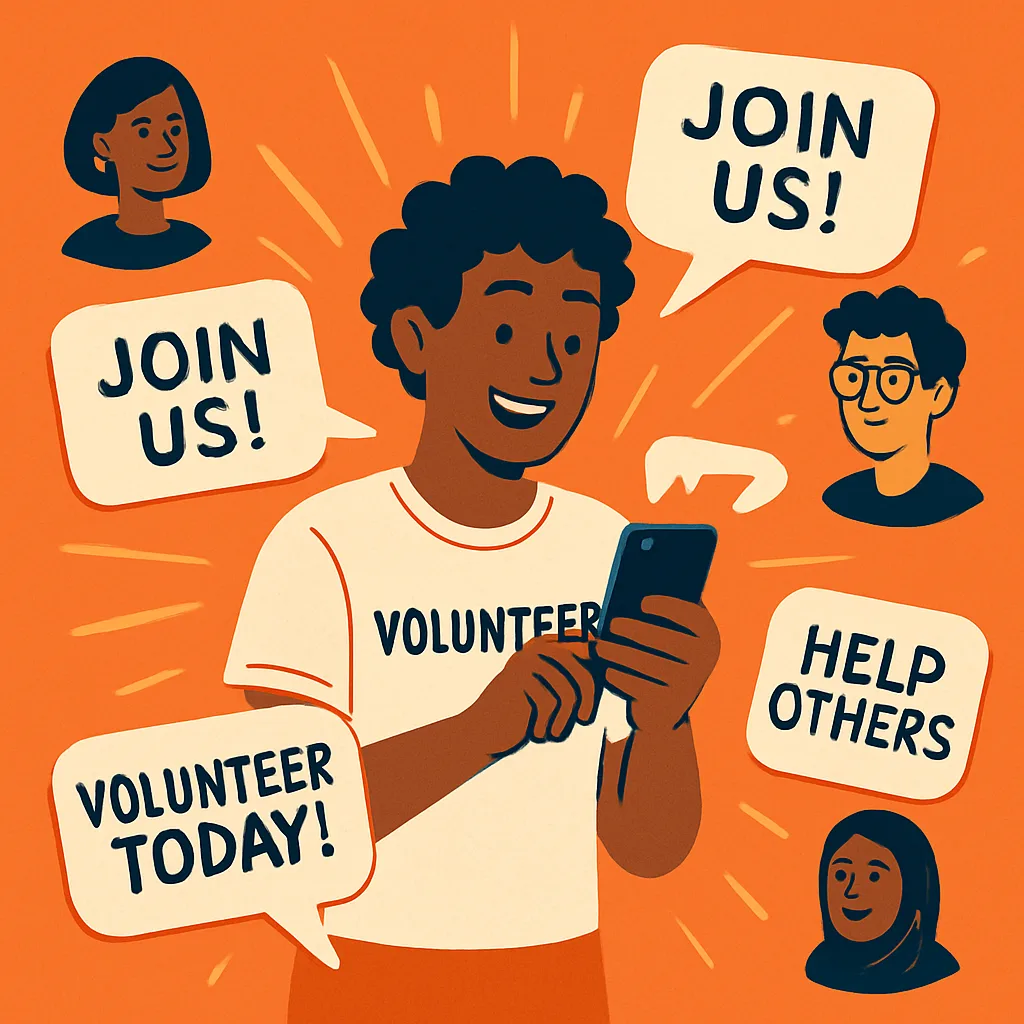
Text messaging is unmatched for speed and immediacy. Peer-to-peer (P2P) and mass text broadcasts allow nonprofits to:
- Mobilize supporters quickly during time-sensitive campaigns, such as urgent calls to action, rapid response to policy changes, or last-minute event reminders.
- Coordinate volunteers efficiently, sending details about opportunities, schedule changes, or critical needs during crises.
- Send action alerts for advocacy, prompting supporters to sign petitions, contact lawmakers, or participate in grassroots efforts, often within minutes of receiving the message.
Texting’s high open rates and directness make it ideal for urgent mobilization, ensuring your message is seen and acted upon fast.
| Pro tip: Use CallHub’s MMS and RCS to send voice notes, images, and videos to increase the impact of your message. |
Phone calls: High-impact pressure throughout the campaign

Phone campaigns are best when you need to raise the volume and passion of your supporters on a specific issue over time.
For last-minute rallies, texts are more effective. Use phone calls to have conversations with your audience and change minds.
Schedule calling campaigns a week or two before ‘big’ moments, so you have time to make the calls, collect feedback, and perhaps plan a follow-up campaign on specific issues.
You can use calls for:
- Educating your community members, activists, and volunteers on your agenda, action steps, why it is important, and how they can contribute.
- Building pressure on lawmakers using features such as patch-through calling. Your volunteers can call community members, train them on key points to speak about, and “patch them through” to lawmakers’ and legislators’ offices to make their voice heard.
Learn More: A Quick Guide To Patch Through Calling For Advocacy Campaigns
| Pro tip: Provide supporters with branching scripts and talking points to keep calls focused and impactful. |
Email: Continuous storytelling and deep dives
Email’s capacity for longer-form content and visual storytelling makes it ideal for deepening supporter engagement. Unlike texts or calls, emails are a continuous process of engagement with a supporter.
You have to plan a ‘user journey’ for your supporters, from the first email you send them at the start of the campaign, to regular updates along the way, to urgent appeals at key moments.
Also, never forget to send the ‘thank you’ email after the campaign is done, no matter the results.
Key points:
- When the campaign begins, use email to share compelling stories, case studies, and testimonials that connect emotionally with readers.
- During the campaign, provide in-depth updates on your campaign’s progress and the impact of donations at regular intervals.
- Include clear calls to action, such as donating, attending events, or signing up for advocacy alerts.
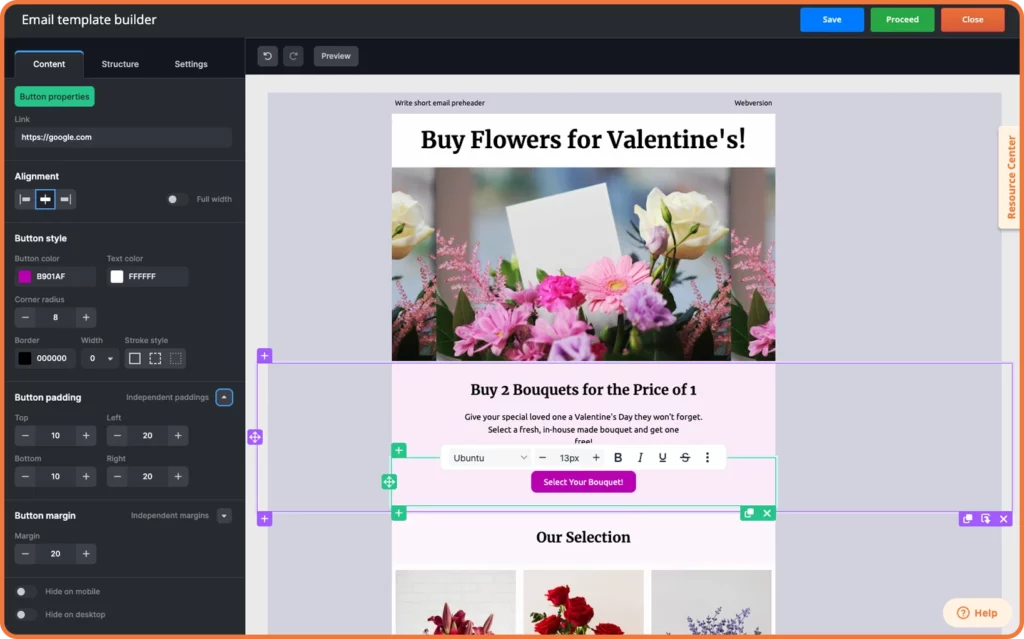
We’ve made email creation and outreach easy with CallHub’s email marketing software. With saved and predefined email templates, you can create new campaigns quickly and without a break in your flow of thought.
CallHub allows you to tag contacts based on whether your email is sent, opened, a link is clicked, or other actions your subscribers take.
These tags become part of your larger campaigns, and you can re-target subscribers with calls and texts.
Beyond these outreach channels, you must harness the viral potential of platforms like Facebook, Twitter (X), and Instagram to amplify advocacy campaigns and reach new audiences. Use hashtags, shareable graphics, and live updates to keep your cause in the public eye and drive real-time engagement.
Key aspects you need for a multi-channel advocacy campaign
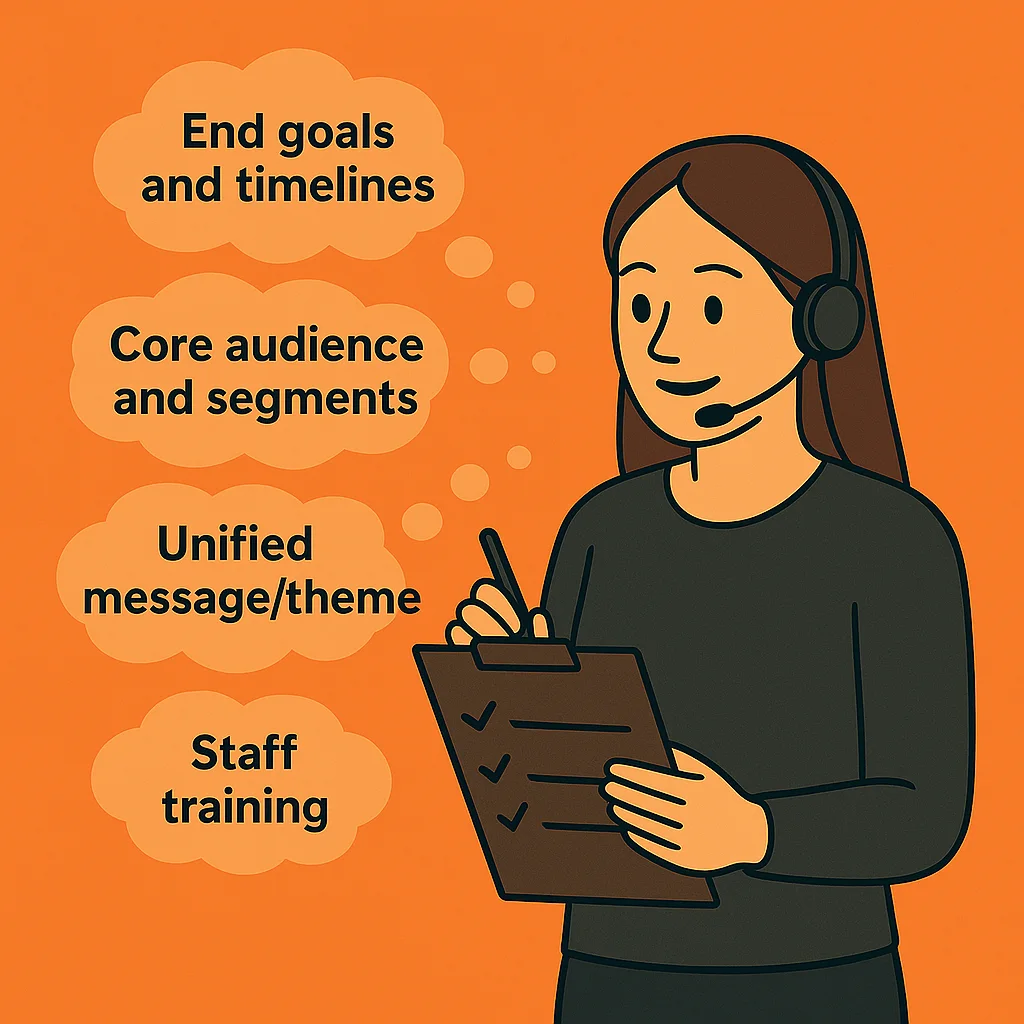
Alright, now that you know how to use your tools, let’s look into planning an entire multi-channel outreach campaign. Before you begin, have a quick look at what you will need:
- Your end goals and timelines to achieve them
- Who your core audience is and the segments within that
- Your unified message/theme across platforms
- How to train your staff to deliver the message
- What metrics are you tracking to define success?
Let’s consider each one of them in detail. Beginning with:
Campaign goals and timelines
In an era where algorithmic visibility and attention spans are scarce, precision in goals and timing isn’t just best practice—it’s survival. Here’s how to anchor your strategy for maximum impact.
Set SMART objectives
SMART is a framework for setting and achieving goals by making them transparent, measurable, attainable, relevant, and time-bound.
Specific: Instead of ‘raise climate awareness,’ aim for ‘secure 10,000 petition signatures supporting Clean Energy Act amendments by September 2025’.
Measurable: Track progress through metrics like legislator commitments secured, social shares, donor conversions, or funds raised. Something you can calculate mathematically.
Time-bound: Align deadlines with external events (e.g., committee vote day, UN Climate Summit, before school opens, etc.) to leverage urgency.
Break goals into phased timelines
The Advocacy Action Guide highlights that monitoring and evaluating progress at regular milestones is often overlooked but critical.
Dividing a campaign into smaller phases allows teams to concentrate on one objective at a time, which boosts productivity and morale. Achievable milestones also provide clear direction and let you measure tangible progress, helping teams make changes if plans fall short of goals.
| Sample timeline for a 6-month multi-channel advocacy campaign | ||
| Timeline | Goal | Measurable progress examples |
| Month 1-2 | Base-building | Recruit 50 coalition partners. |
| Month 3-4 | Public awareness surge | Send 5,000 emails to lawmakers. |
| Month 5-6 | Direct legislative pressure | Set up 20 in-person meetings with lawmakers. |
Legislative vs Public awareness vs Internal mobilization: Strategic alignment
Real change will require a change in the rules of the land. Those can only happen through a legislature at the federal or state level. So, keeping your timelines glued to your state’s legislature session and planning backwards from there will give you a solid foundation.
- Legislative campaigns fail easily without precise timing – 90-day state sessions leave no room for delays. So this has to be planned first.
- The public backing you will need to lobby for legislation requires months of time to arrange. So, plan backwards from the state session opening.
- All of this will fall apart if you don’t maximize your resources efficiently. So hire/sign-up people well in advance.
So all three have to be in sync for a successful campaign. Plan appropriately for each kind of outreach.
Identify your core audience and segments
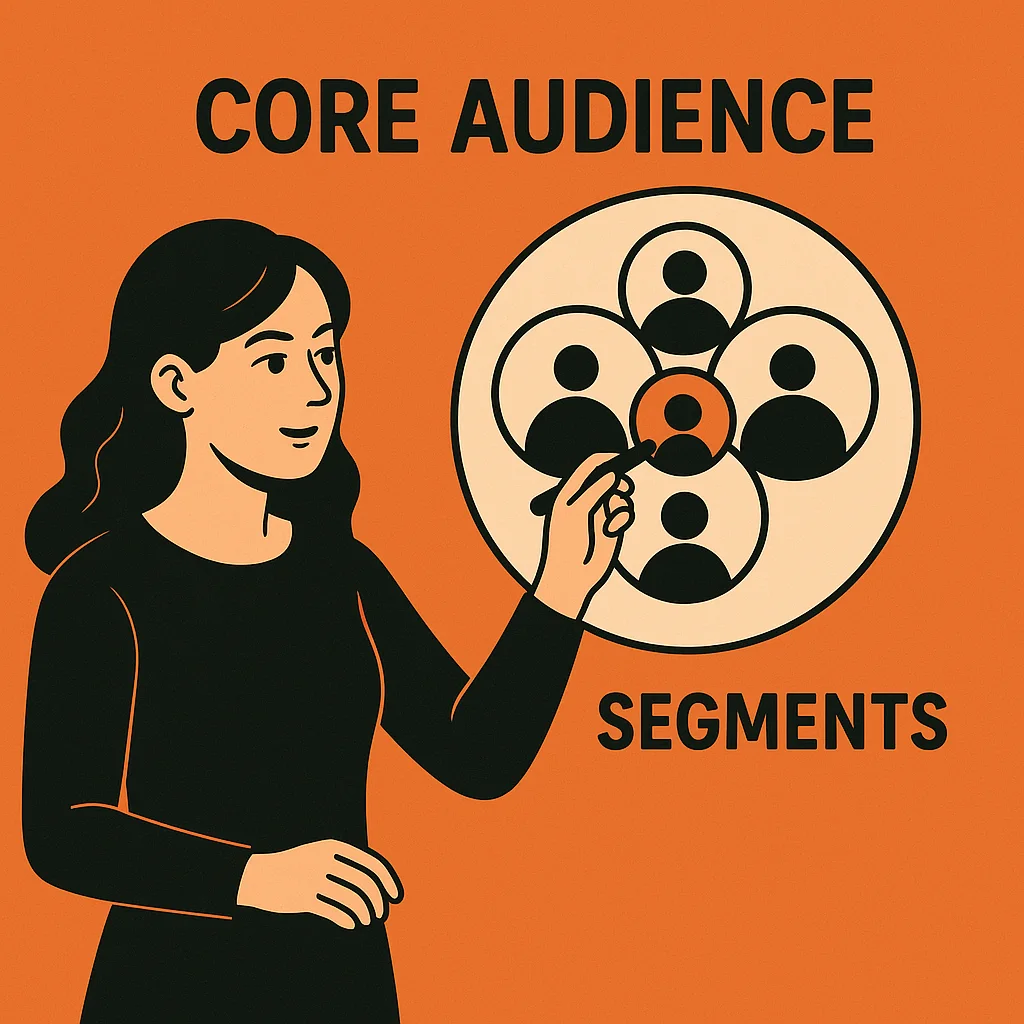
Advocacies serve diverse stakeholders- donors, volunteers, beneficiaries, advocates, and partners. Each group has unique motivations, preferred channels, and engagement patterns.
Identifying and segmenting your core audience ensures your messages resonate, and CallHub provides solutions to segment your contact lists, making them exponentially more effective.
There is no point in sending Instagram appeals to teenagers about changing the laws for retirement homes. And you won’t get far calling seniors to sign a pledge for a new skateboard park.
So you need to map your audience, divide them into segments, and personalize communication for each.
Step one: Map your audience
Start by mapping your Total Addressable Audience (TAA) and identifying the key characteristics of your ideal supporters. This involves:
- Analyzing your existing supporter-donor base for common traits such as age, gender, education level, income level, etc.
- Using benchmarks to understand who benefit most from your agenda and objectives.
- Creating detailed supporter-donor personas that include pain points, goals, and preferred communication channels.
Go beyond numbers. Conduct surveys, interviews, or focus groups to understand why people support your mission and what matters most to them.
Step two: Use the right tools to segment your audience
Tools help nonprofits collect, analyze, and segment supporter data, enabling personalized and effective campaign outreach across multiple channels.
So make sure you are using the full range of CallHub solutions for your outreach, including:
Here’s everything you need at a glance:
| Advocacy contact list: How to make segments for multi-channel outreach advocacy | ||
| Segmentation Type | Example Segments | CallHub Tool |
| Demographic | Age, gender, education, and income | Use ‘Text to Join’ to firstly opt in to your communications and second to ask for demographic details as replies to SMS. |
| Behavioral | Giving frequency, event attendance, and engagement | Use RSVP tags in the contact list to confirm attendance during follow-up phone calls pre- and post-event. |
| Psychographic | Values, interests, motivations | Ask questions during annual peer-to-peer texting campaigns, and add replies as tags. |
| Channel Preference | Email, social, SMS, direct mail | Regularly launch SMS survey campaigns to ask for preferences. Map replies to their contact details as tags. |
| Cause/Program Interest | Supporters of specific programs or campaigns | Send automated texts after each campaign to collect feedback. Sync feedback (positive, negative, etc.) as tags with your CRM. |
Data-driven insights with a deep understanding of your supporters’ motivations and preferences will help you create campaigns that inspire action and amplify your mission.
| Pro-tip: Manage your volunteers using software tools |
| Ready to take your advocacy’s outreach to the next level? Managing a large number of volunteers or agents is now easier with CallHub Teams for Volunteer Management. Get Started |
Coordinate and customize your messages
Though people may be consuming your content across various platforms, keep in mind that they do still remember that it is all from one entity. So if your messages have widely different tones, subjects, colors, and styling, and even grammar variations, then it will cause dissonance among your audience.
There has to be a feeling among the audience that all the content they consume from your nonprofit follows a set of content pillars (key topics/themes) that all messaging ties back to – but is still customized for the platform they are consuming it on.
No one expects a whole script to be shared over SMS, nor do they expect emails to be one-liners. Customizing and coordinating your content is critical to maximize impact.
Here’s how you can do it at a glance:
| Best Practice | How to Implement | Pro Tips |
| Develop a clear, central campaign message. You must customize for each channel to create the ‘echo’ effect. | Adapt the tone, length, and format for each channel – short for SMS, graphics for Instagram, a detailed letter for email, etc. | Create a brand style guide with voice, tone, and visual guidelines for all platforms. |
| Personalization leads to higher donor retention. Don’t duplicate content across channels, OR send the same message to all readers. | Rework the copy and visuals to fit each platform’s audience. Personalize every message for each reader, especially their name and past history with the organization. | Use CallHub’s merge tags in texts and calling campaigns to personalize first names or locations. Refer to previous interactions – events or donations – in your messages or calls using contact list tags. |
| Prevent channel fatigue. Don’t send the same content in the same channel to the same person 20 times. | Change the content every time. Make sure you include updates every time. Change your formats regularly – make a call, send a message, write an email, make a social media post, etc. | CallHub provides analytics to monitor engagement and frequency. Track analytics like open rates for SMS and emails, call duration for phone calls, etc. Change platform when the numbers start going down. |
| Maintain a central calendar. Keep track of campaigns and the content that is being launched across platforms. | Use a shared editorial or integrated calendar to plan, schedule, and track content across all channels. | CallHub integrates with Google Calendar and other calendars to sync campaign schedules and events. |
Train your organizers and volunteers
Well-trained volunteers not only represent your mission better, they also feel more confident, stay engaged longer, and drive greater impact. They also form a thriving community for future campaigns.
Read More: The Most Effective Volunteer Recruitment Methods and Tools for Your Cause
So here’s how leading nonprofits structure their training programs:
Centralized onboarding:
Centralized onboarding streamlines administrative tasks and helps new volunteers integrate quickly, saving staff time. During this onboarding, you must:
- Share your organization’s vision, values, and impact stories.
- Clearly define expectations, responsibilities, and time commitments.
- Provide handbooks, FAQs, and compliance materials to answer common questions.
| Pro tip: Use the ‘Train the Trainer’ model |
| ‘Train the Trainer’ is a training model used by organizations like the American Red Cross. This model is valuable for resource-strapped nonprofits, as it reduces the burden on staff and builds a peer-driven learning culture |
| Learn the ‘Train The Trainer’ Model |
An advocacy using a toolkit like Neon CRM or VolunteerHub can onboard new volunteers through a central portal, automatically sync their data to the CRM, and use integrated communication tools to send personalized welcome emails, training links, and campaign invitations.
Provide adequate training
Effective volunteer training is more than a one-time event- it’s an ongoing process that includes:
- Role-specific instruction: Tailor training to the volunteer’s responsibilities – phone banking, canvassing, or digital outreach. Make sure they understand the tools they are using.
- Scripts: Provide clear, accessible branching scripts for calls, texts, and P2P conversations. CallHub allows you to upload your script with your campaigns to ensure the proper script is always accessed.
- FAQs: Share a living FAQ document so volunteers can self-serve answers to common questions and challenges.
Ensure volunteers are familiar with their tools
You must ensure volunteers are trained on CallHub to use the platform adequately. Take volunteers through their dashboard on CallHub and ask them to install CallHub’s mobile app on their phones.
With the CallHub Mobile App, they can reach out to contacts, collect survey responses, and do follow-ups- all from one place.
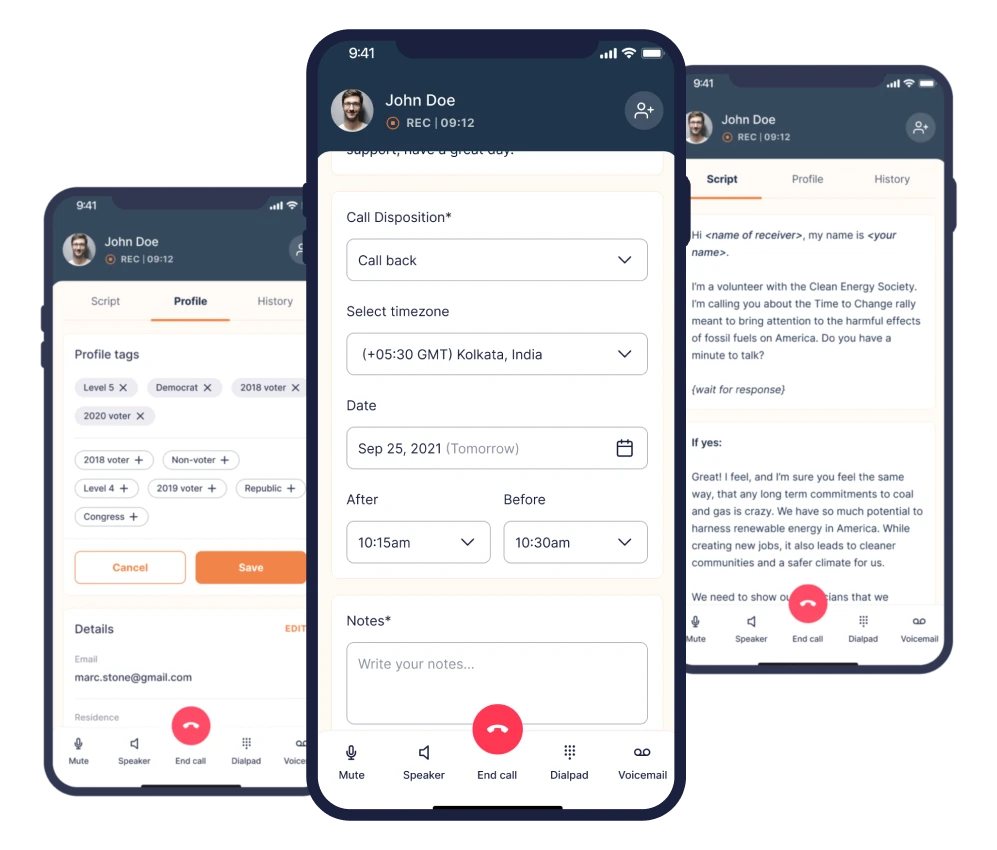
| Pro tip: CallHub does not charge you for the volunteers you add to a campaign. So, make as many volunteer accounts as you need. |
When you run a multi-channel advocacy campaign, it is easy to get flooded by numbers from every channel. But finding yourself drowning under Excel sheets of columns will leave you adrift at sea.
Now your primary focus is always going to be on funds raised or actions taken (attendance at a protest, or legislation passed, etc.) But beyond that, don’t chase every metric out there.
What you need to do is answer three major questions:
- What is the impact of the current phase of the campaign?
- Which channel is the campaign having the most and least impact?
- Where do we need to make a change?
So all you need to know is if your plans are working, who is it working the most on, and what changes do you need to make to course-correct.
Here are the important metrics you need to track at a glance:
| Essential Analytics for Multi-Channel Advocacy Campaigns | ||
| Metric category | Key metrics & KPIs | Purpose/optimization focus |
| Engagement | Social media likes, shares, and comments; email and SMS opens/Click Through Rates | Check if you have to tweak the content to be more relatable. |
| Reach | Impressions, reach and follower growth on social media and the website. | Check if the audience is expanding or shrinking week to week. |
| Conversion | Click rates on SMS, email and social media posts. Action taken (ex: petition signed) after SMS or calls. | Check if your ‘Call to Action’ (CTA) needs tweaking. You can also change your CTA to do some A/B testing. |
| Website analytics | Traffic, unique visitors, bounce/session rates, clicks on donation or CTA pages. | Check if your user journey needs to be refined. Do the people who come to your website do what you want them to do? |
| Channel-specific ROI | Is growth or reach in line with that specific channel’s industry standard? Overall reach numbers sorted by channel. | Check if you can re-allocate resources from a channel with poor ROI to a more popular one. |
Use dashboards and real-time analytics to adjust tactics mid-campaign, reallocating resources to the best-performing channels and strategies.
| Pro tip: Calculate the cost to acquire each new supporter or donor, helping to assess campaign efficiency |
CallHub solutions: Powering seamless multi-channel advocacy
Modern advocacy demands modern tools. Our multi-channel outreach software empowers your organization to:
- Coordinate across email, SMS, phone calls, and more – all from one platform.
- Customize messaging based on supporter behavior and preferences.
- Analyze engagement across channels to continually refine your strategy.
By investing in orchestration, you future-proof your advocacy, ensuring every effort is intentional, relevant, and impactful—no matter how the advocacy landscape evolves.
Ready to mobilize people for your cause across all channels? Sign up with CallHub.

